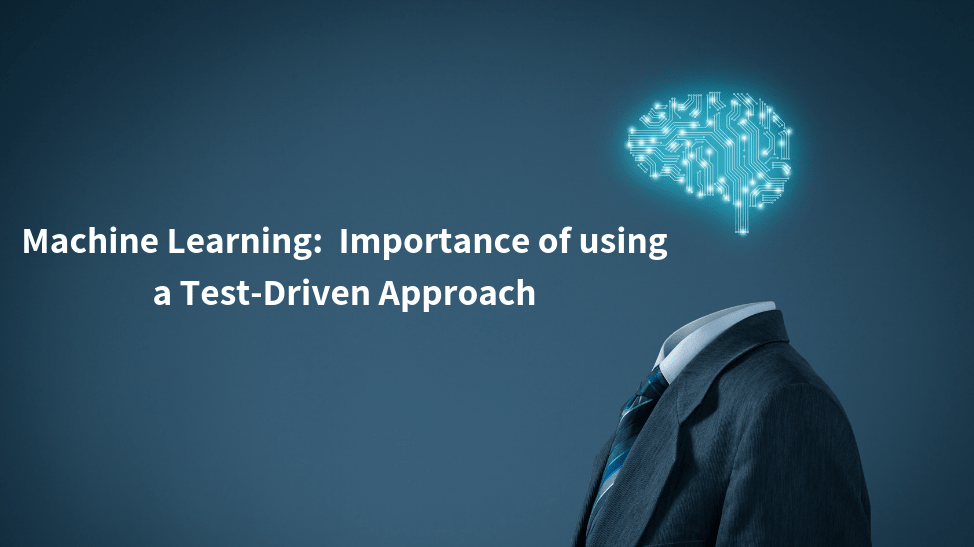In layman’s terms, machine learning is a variant of artificial intelligence which extracts patterns out of a given set of input data and makes sense from random inputs to develop a meaningful model. Usually, it is teaching machines to understand and analyze data in the same manner as humans do. Since the computing capacity of machines is optimal and far better than the human brain, machine learning is considered to be one of the most promising fields of computer science. However, every machine learning algorithm has some inherent defects and trade-offs and quirks, which makes it necessary to use a test-driven approach and underscores the importance of testing in this domain.
Though machine learning is effective and efficient, as humans, we don’t have the same rate of effectiveness. Though the machine learning algorithms are designed to be capable of minimizing errors, it is possible that defects in coding algorithms may have an effect of not minimizing right errors or instead, errors in the code may lead to more defects than before. Consequently, tests are required to address human errors and also to document the progress. One of the most popular ways of writing these tests is referred to as test-driven development (TDD).
There are multiple benefits to use TDD approach to machine learning. Though TDD may usually take more time (up to 15-35% of normal time), it can also reduce the bugs by a whopping range of up to 90%. Further, TDD is used widely to document how the code is intended to work, which becomes helpful as the complexity of the code increases and enables making crucial decisions based on what comes out of the analysis.
Importance of using Test-Driven Approach in Machine Learning
1. TDD is akin to a scientific method
One of the major reasons why TDD is preferred in the machine learning process is because it can easily since with the people and their working style. Thus, the testing, theorizing and hypothesizing process is very similar to any other scientific method and enables better test processes through cleaner and more stable codes.
There are other reasons as well why TDD is considered a scientific method-
- Helps to work in feedback loops
- Sharing results through documentation is efficient
- It makes a logical proposition of validity
It is also possible to experiment test-driven development, as you can utilize the tests to experiment with things that might never work, instead of following a traditional approach to write tests first and eventually fix the error created by the initial test. This methodology helps in solving many complex problems that are hitherto not easily solvable.
2. TDD and Scientific Method Work in Feedback Loops
It is important to also understand that both TDD and scientific method tends to work in feedback loops. This can be seen through the fact that when someone forms a hypothesis and tests the same, he could find more data on the problem he is investigating in a scientific environment. In the same way, when someone forms a test to arrive at a prospective conclusion and goes through the process of writing the code, he develops and identifies more information on how to proceed. This method of making a hypothesis, testing and revisiting them is, therefore, a scientific process that is used by many TDD practitioners.
Academic institutions usually require professors to publish their research, without which there are high chances that the research would be worthless. In the same way, TDD can be peer-reviewed and serve as a documentation process. Since software is abstract and continuously changing, documentation helps to keep a track of such change and ensures the progress is tracked by new developers.
4. TDD Makes a Logical Proposition of Validity
Usually, a scientific method involves trying to find the solution to a problem and proving that the solution is valid, which may require creating guessing. In order to justify a belief we consider true, we construct a logical, stable proposition through the use of necessary and sufficient conditions.
- Necessary conditions are defined as those conditions without which the hypothesis would fail. For instance, this could be a preflight checklist or a majority vote. The necessity is that all conditions should be fulfilled in order to convince us that whatever is being tested is correct.
- Sufficient conditions, however, refers to those conditions that present just enough evidence for an argument.
TDD uses both sufficient and necessary conditions to make a set of propositions that come together in a cohesive way. However, it must be noted that unlike scientific method which uses axioms and hypothesis testing, TDD uses unit and integration tests.
Conclusion
As we’ve seen above, machine learning is nothing but a science requiring an objective approach to issues in the testing process. TDD can aid in solving issues arising in machine learning algorithms, because of four major reasons identified above (i.e. proposing logical and valid propositions, working in feedback loops and sharing results through documentation). However, there are risks associated with machine learning, such as:
- Underfitting
- Unpredictable future
- Unstable data
- Overfitting
The best part, however, about TDD based machine learning process is that you can think and write heuristics before writing actual codes to solve machine learning problems.
Give us 30 minutes and we will show you how many millions you can save by outsourcing software testing. Make Your product quality top notch. Talk to us to see how
